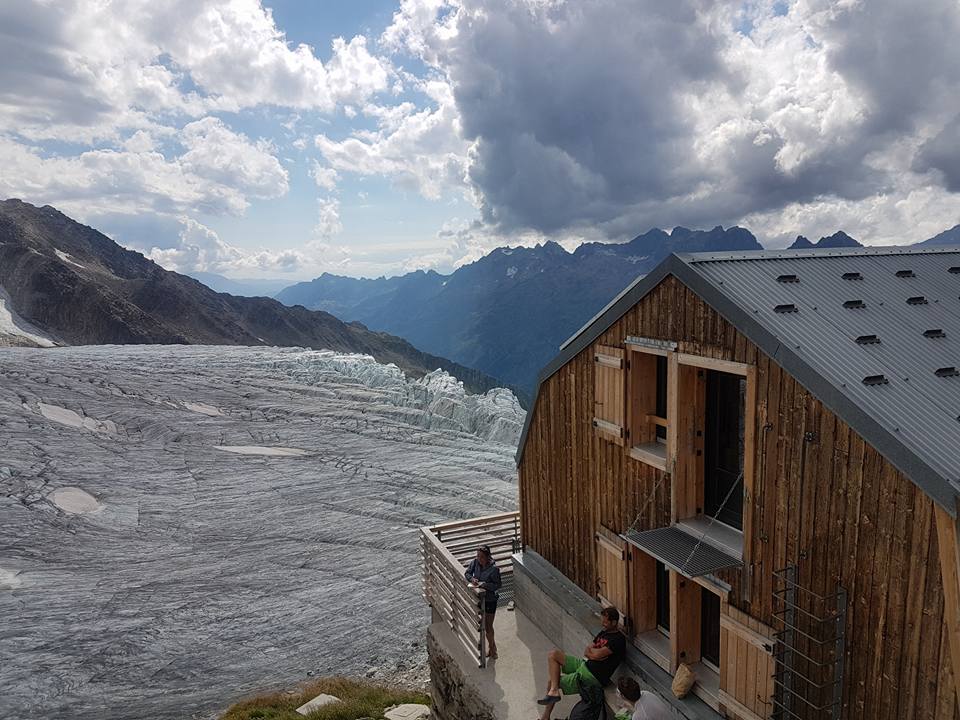Mountain huts, refuges, shelters…
They are a unique place to spend a night, in more ways than one… They are also a great idea if you want to stay at altitude and reduce the amount of ascent/descent planned on summit day, or if you need to set off early doors.
They come with their own sights, smells and sets of rules to be aware of… and be aware you should, as there will always be someone to call you out on them.

The style of these huts can vary and be anything from a private room to a very simple shelter or a multi floor dorm style set up. The majority of the larger huts are the latter, with either rooms of bunk beds or one giant bed.
(The dream I know, but not so much when you’re sharing with 6 other people who like a good snore…)
So, what do you need to know?
- Pre-book if you’re headed out in the high season. This is the best way to do things if you’re aiming for a popular area. You can either pop along to the tourist office in the town, or call the hut guardians directly. As an example, the Gouter Hut for Mont Blanc can sometimes have bookings a year in advance… One month ahead should be fine for most.
- Most huts are open July to September, but this can obviously depend on conditions in the mountains/access etc…
- You are not usually allowed to wear walking boots inside the hut. Leave them in the designated boot room and take advantage of footwear supplied. The Albert 1er had some very lovely Crocs on offer. I took my North Face tent mules because they were far cosier!
- Most of the dorms cater for 6+ people but can be anything up to 40… So take earplugs. Trust me on this one. There’s nothing worse than being exhausted, knowing you have a 0400 wake up and having no sleep because the room is full of snorers!
- Generally blankets and a pillow are provided, so you don’t need to lug all your camping gear up the mountain with you, but take a sleeping bag liner.

- Most huts operate a first-come-first-served sleeping scenario. The earlier you arrive, the more chance you have of choosing where you sleep. If you’re with friends, this is pretty much the only way you’ll be in the same room.
- Most of the huts I visited served meals in a room with communal tables. The hut guardian will often assign a seat for you and your group and you are expected to eat there whilst staying in the hut. Dinner varied from hut to hut, but the Albert 1er served us soup, a main course of stew and rice, and a dessert. If the hut doesn’t have drinking water you will need to pay for bottled water. This is expensive, but remember that they have to get the bottles and food up there in the first place.
- Bring cash, Cards aren’t usually accepted, and settle your bill before you go to bed, so that you can get away quickly in the morning.
- Take your Alpine Club membership card (if you have one) as you can often get a discount. BMC members can gain the same discount by purchasing a Reciprocal Rights Card (RRC) from the BMC for £45.00 (Info from BMC website, 2018). The RRC gives discounts to huts under the control of the Alpine Clubs of France, Switzerland, Italy, Germany, Holland, South Tyrol, Austria and Spain. With membership a hut is obliged to provide you with space even if the hut is full, i.e. the floor.
- Pack. The. Night. Before – Make sure you’re ready to go when you get up, there’s nothing worse than someone unpacking and repacking everything, waking people up with their head torch and leaving things strewn across the floor. Be mindful of other people. They may not be getting up at the same time as your group… Some huts have a policy of packs being left outside of the dorm for this reason, but make sure you pick up your own pack. Easy to mistake them all at 0300!

- Head torch – Ideally one with a red light function, as it’s not so glaring on the eyes in the middle of the night!
- Drink lots of water and, whilst most huts do sell alcohol, don’t go mad, because you will be staying at altitude.
- Be polite to the staff.
- If you’re struggling to sleep, that’s normal. Sleeping at altitude can be weird for some.
I pass out straight away and have done every time, but I know that in my group, quite a few didn’t sleep at all and were utterly exhausted the next day. - Most huts have a communal bathroom/washroom.

- If you’re feeling ill when you wake up for your summit push, be honest with yourself. For 3 weeks before I headed to the Alps I had a horrendous virus. Whilst the altitude wasn’t having an effect on me, that was and I made the call not to go up for one summit, because I knew I wasn’t feeling strong enough. Disappointing, but don’t push it just because you’re got that far. Some of the huts often have great coffee and cake if you do end up waiting for your group to return on one morning!
- Don’t forget to eat breakfast before you set off. Options (I found) were usually cereal, bread, ham, cheese, coffee and tea.
- Recce your route for the next morning the night before. Some huts are on pinnacles and this prevents any mistakes in the dark.


Most of all, enjoy the experience.
They’re a unique place to stay, and a great way to be up on the summit as early as possible.
Do you have any other tips for people who may not have stayed in a hut/refuge before?

